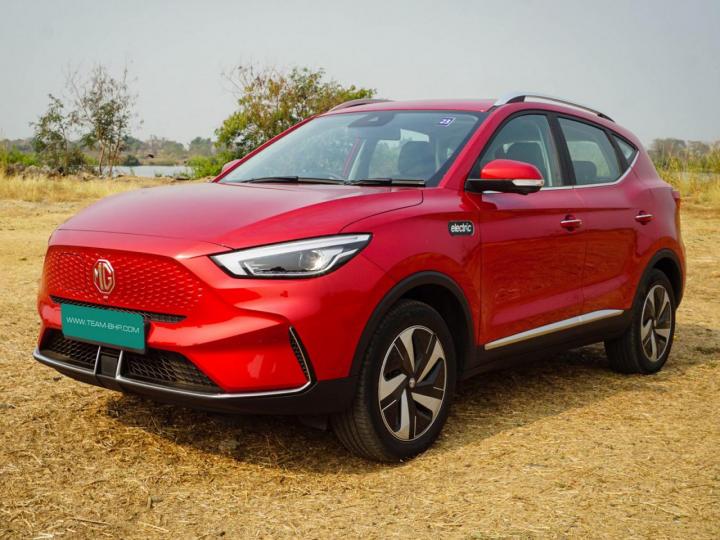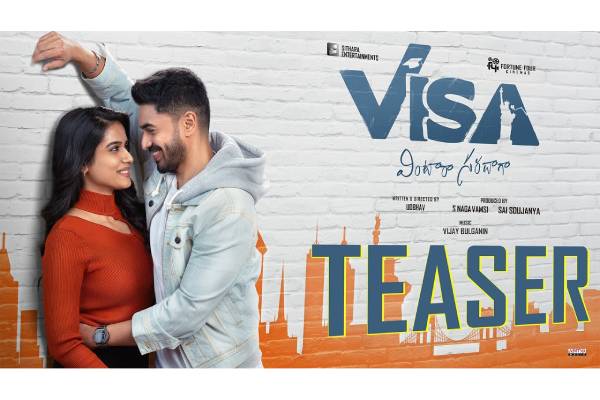 BHPian beemer5499 recently shared this with other enthusiasts: Till now, I had been hearing about how EVs are cheaper to run and low cost, etc but truth be told, I don’t think many know about the costs of buying and owning an EV. Lets start with the costs one by one:Higher upfront cost – Compared to ICE equivalent, EVs cost almost 15-20% more, even though the road tax is nil in many states for EVs.Cost of the charger – Most 11 Kw chargers from manufacturers cost about 75k and 7Kw chargers cost 50k. Exicom chargers cost 38k for 7.5Kw and 43k for 11 Kw as per Amazon prices.Cost of home set up – There is additional cost in ramping up the sanctioned load from your electricity provider and switching to 3 phase connection from 1 phase. This will also ramp up your monthly electricity bill. There is also an additional cost involved in case one is getting a separate connection for the EV also sometimes known as a green meter. This cost will be in the ballpark of 50-75k.Insurance cost – Insurance for EVs is apparently slightly higher compared to ICE vehicles.Cost of resale – The resale value for EVs is lower compared to ICE vehicles even though the modern batteries can last for a significant number of kilometres and also since EVs have less moving parts, they will be relatively maintenance free or have cheap maintenance if purchasing pre-owned.Tyres – Since EVs are heavier and more powerful, tyres on EVs last less and since they’re often specced with big tyres and alloys, the replacement costs are expensive.Brake pads – I suppose the brake pads on EVs last less compared to ICE, given the power figures and the instant torque leading to more frequent braking.Cost of discounts/price reduction – An EV which you buy today may see discounts or price reduction in the very near future due to the battery costs becoming lower or newer technology becoming available.Given all this, I feel if someone calculates, an ICE car will work out to be cheaper than an EV unless someone clocks insanely high mileage in a short ownership. Just that the daily/monthly expenditure with an EV will be lower. I am still figuring out whether to upgrade my household connection to 3 phase and increase the load to 12 Kw to support the 11 Kw charger and bear increased electricity bills irrespective of usage or get a separate meter for EV charging and bear a one time expense and fixed charges as per usage. There is also no clear procedure on how to get a separate EV connection from BSES in Delhi and team-BHP guides are limited to Maharashtra and Bangalore. Request experienced members to guide on this and also if someone could help compare the expenses of both options as well as the cost of owning an ICE vs EV. Also, I don’t think a 15A/3Kw charging would suffice to charge a daily runner with a 79 Kw battery pack as it would probably take 2.5 days to fully charge the car at that speed. Lastly, all this is wasteful expense if the next car isn’t going to be an EV as well and one isn’t a full convert. Here’s what BHPian Karthik_Mathurhad to say on the matterThis makes a lot of sense, and I’m experiencing a lot of these feelings as I’m going for an EV too. One main reason i decided to shift to EV is due to the fact that I have decided to go for solar and there is a government subsidy for it. However, there are other costs that I’m slowing discovering. Increased security deposit – every kw Increase results in an increase in security deposit. It can easily go upwards of 20-30k when you go upto 15kw (11kw for the charger, 2-3kw for regular usage, 1-2kw buffer). And the rule of thumb is existing load + charger kw so it could end up going beyond 15 too. Conversion to 3 phase – this requires laying of new cable from the electricity box to the meter box of much greater thickness (16sqmm is what I put). This comes at 140 per m so you can do the math depending on your circumstance. You also need to add a new MCB for connecting to your home, and another MCB specifically for the the EV charger (as told by Mahindra’s EV charger team). You’ll also need to put a new cable from the meter box (the MCB to be precise) to your home which also needs to be of higher quality (4 or 6 sqmm). And this activity will not be done by the electricity board people so you’ll have to involve your local electrician Ideally, you should also change the internal wiring to 3 phase but that’s an activity i have put off for now, maybe take it up during the next painting/ renovation. I have noticed that a lot of new buildings (10-15 years+) in Mumbai/ Navi Mumbai already come with 3 phase connections and a sanctioned load of upwards of 7 or 8kw. So the pain and cost will definitely be lower there. Fixed rate increase is something that the OP already spoke about. Follow-up tax aka timecost- Literally no activity happens exactly on time and after telling them just once. You’ll need to do a lot of follow-ups, multiple visits to the electricity board office to get things approved, some minor facilitation charges to get a test Certificate from an authorised contractor, coordinating with multiple people. While MSEDCL has an online portal, no one takes a look at it on their own. So you’ll have to take a print, visit the office, wait for the main guy, he won’t turn up so do the same thing again. And then again go to follow up to check why it has not been authorised yet. And here’s the kicker – they won’t authorise an increase all the way to 15kw without the charger actually installed or at least submitting proof of booking. So you might end up doing this in multiple stages. If I were to apply the charge out rate that my firm uses for my time to bill to clients, this whole endeavour would be loss making from Day 1. Maybe private players are better, but we don’t have an option to choose our electricity suppliers so here I am. Human memory for difficulties is short and I probably won’t even remember these steps in a few years. It would just be BAU and I’ll enjoy the benefit of lower running costs.Here’s what BHPian speedmiesterhad to say on the matter:Partially agree on some of your points. 1. Upfront cost: Yes, EVs are expensive compared to their ICE counterparts 2. Cost of Charger: Most EVs come with own chargers and it’s included in the cost. There are good alternatives in the market which are 1/2 the price of ones offered by manufacturers 3. Don’t think so, Insurance cost is similar to ICE cars. 4. Cost of Resale: At the moment, Yes. Mainstream EVs are about 5 yrs in the India market. This is evolving and might tilt in the favour of EVs, if the emission norms get stricter year after year. 5. Tyres: False, my earlier ZS EV had similar wear and tear after 50,000kms as the Ecosport. 6. Brake pads: False. With regenerative braking in EVs, brake pads will last twice as longer on EVs. This is only true if one doesn’t use regen. I am used to the Brake boost mode in my iX1 and very rarely use the friction brakes. The regen braking does 95% of the braking and even brings to the vehicle to a stop. 7. Cost of discounts/Price reduction: This is true for all cars and not specific to EVs.Here’s what BHPian somersault had to say on the matter:Particularly in Mumbai, the electricity cost is exorbitant because of the fixed cost, wheeling charges, fuel adjustment charges, taxes and what not. I have a 3 phase connection and the sanctioned load of 11 KW is already there because of multiple electrical equipment including 3 ACs etc. In a nutshell, considering all extra charges, my per unit cost is Rs 11 and it can go to Rs 12 or more if my usage increases. In the last couple of years alone the cost has increased from max Rs 8 to Rs 12. We talk only about published unit rates but not the combined rate. While I do not own EV but when I was considering the new car purchase, EV was considered and current electricity cost including the cost of increasing the sanctioned load was considered. In addition, the rate of increase of the total bill was considered and the idea was dropped. Note – This may not be true for other people. But just sharing the details which applied to my case.Read BHPian comments for more insights and information.
BHPian beemer5499 recently shared this with other enthusiasts: Till now, I had been hearing about how EVs are cheaper to run and low cost, etc but truth be told, I don’t think many know about the costs of buying and owning an EV. Lets start with the costs one by one:Higher upfront cost – Compared to ICE equivalent, EVs cost almost 15-20% more, even though the road tax is nil in many states for EVs.Cost of the charger – Most 11 Kw chargers from manufacturers cost about 75k and 7Kw chargers cost 50k. Exicom chargers cost 38k for 7.5Kw and 43k for 11 Kw as per Amazon prices.Cost of home set up – There is additional cost in ramping up the sanctioned load from your electricity provider and switching to 3 phase connection from 1 phase. This will also ramp up your monthly electricity bill. There is also an additional cost involved in case one is getting a separate connection for the EV also sometimes known as a green meter. This cost will be in the ballpark of 50-75k.Insurance cost – Insurance for EVs is apparently slightly higher compared to ICE vehicles.Cost of resale – The resale value for EVs is lower compared to ICE vehicles even though the modern batteries can last for a significant number of kilometres and also since EVs have less moving parts, they will be relatively maintenance free or have cheap maintenance if purchasing pre-owned.Tyres – Since EVs are heavier and more powerful, tyres on EVs last less and since they’re often specced with big tyres and alloys, the replacement costs are expensive.Brake pads – I suppose the brake pads on EVs last less compared to ICE, given the power figures and the instant torque leading to more frequent braking.Cost of discounts/price reduction – An EV which you buy today may see discounts or price reduction in the very near future due to the battery costs becoming lower or newer technology becoming available.Given all this, I feel if someone calculates, an ICE car will work out to be cheaper than an EV unless someone clocks insanely high mileage in a short ownership. Just that the daily/monthly expenditure with an EV will be lower. I am still figuring out whether to upgrade my household connection to 3 phase and increase the load to 12 Kw to support the 11 Kw charger and bear increased electricity bills irrespective of usage or get a separate meter for EV charging and bear a one time expense and fixed charges as per usage. There is also no clear procedure on how to get a separate EV connection from BSES in Delhi and team-BHP guides are limited to Maharashtra and Bangalore. Request experienced members to guide on this and also if someone could help compare the expenses of both options as well as the cost of owning an ICE vs EV. Also, I don’t think a 15A/3Kw charging would suffice to charge a daily runner with a 79 Kw battery pack as it would probably take 2.5 days to fully charge the car at that speed. Lastly, all this is wasteful expense if the next car isn’t going to be an EV as well and one isn’t a full convert. Here’s what BHPian Karthik_Mathurhad to say on the matterThis makes a lot of sense, and I’m experiencing a lot of these feelings as I’m going for an EV too. One main reason i decided to shift to EV is due to the fact that I have decided to go for solar and there is a government subsidy for it. However, there are other costs that I’m slowing discovering. Increased security deposit – every kw Increase results in an increase in security deposit. It can easily go upwards of 20-30k when you go upto 15kw (11kw for the charger, 2-3kw for regular usage, 1-2kw buffer). And the rule of thumb is existing load + charger kw so it could end up going beyond 15 too. Conversion to 3 phase – this requires laying of new cable from the electricity box to the meter box of much greater thickness (16sqmm is what I put). This comes at 140 per m so you can do the math depending on your circumstance. You also need to add a new MCB for connecting to your home, and another MCB specifically for the the EV charger (as told by Mahindra’s EV charger team). You’ll also need to put a new cable from the meter box (the MCB to be precise) to your home which also needs to be of higher quality (4 or 6 sqmm). And this activity will not be done by the electricity board people so you’ll have to involve your local electrician Ideally, you should also change the internal wiring to 3 phase but that’s an activity i have put off for now, maybe take it up during the next painting/ renovation. I have noticed that a lot of new buildings (10-15 years+) in Mumbai/ Navi Mumbai already come with 3 phase connections and a sanctioned load of upwards of 7 or 8kw. So the pain and cost will definitely be lower there. Fixed rate increase is something that the OP already spoke about. Follow-up tax aka timecost- Literally no activity happens exactly on time and after telling them just once. You’ll need to do a lot of follow-ups, multiple visits to the electricity board office to get things approved, some minor facilitation charges to get a test Certificate from an authorised contractor, coordinating with multiple people. While MSEDCL has an online portal, no one takes a look at it on their own. So you’ll have to take a print, visit the office, wait for the main guy, he won’t turn up so do the same thing again. And then again go to follow up to check why it has not been authorised yet. And here’s the kicker – they won’t authorise an increase all the way to 15kw without the charger actually installed or at least submitting proof of booking. So you might end up doing this in multiple stages. If I were to apply the charge out rate that my firm uses for my time to bill to clients, this whole endeavour would be loss making from Day 1. Maybe private players are better, but we don’t have an option to choose our electricity suppliers so here I am. Human memory for difficulties is short and I probably won’t even remember these steps in a few years. It would just be BAU and I’ll enjoy the benefit of lower running costs.Here’s what BHPian speedmiesterhad to say on the matter:Partially agree on some of your points. 1. Upfront cost: Yes, EVs are expensive compared to their ICE counterparts 2. Cost of Charger: Most EVs come with own chargers and it’s included in the cost. There are good alternatives in the market which are 1/2 the price of ones offered by manufacturers 3. Don’t think so, Insurance cost is similar to ICE cars. 4. Cost of Resale: At the moment, Yes. Mainstream EVs are about 5 yrs in the India market. This is evolving and might tilt in the favour of EVs, if the emission norms get stricter year after year. 5. Tyres: False, my earlier ZS EV had similar wear and tear after 50,000kms as the Ecosport. 6. Brake pads: False. With regenerative braking in EVs, brake pads will last twice as longer on EVs. This is only true if one doesn’t use regen. I am used to the Brake boost mode in my iX1 and very rarely use the friction brakes. The regen braking does 95% of the braking and even brings to the vehicle to a stop. 7. Cost of discounts/Price reduction: This is true for all cars and not specific to EVs.Here’s what BHPian somersault had to say on the matter:Particularly in Mumbai, the electricity cost is exorbitant because of the fixed cost, wheeling charges, fuel adjustment charges, taxes and what not. I have a 3 phase connection and the sanctioned load of 11 KW is already there because of multiple electrical equipment including 3 ACs etc. In a nutshell, considering all extra charges, my per unit cost is Rs 11 and it can go to Rs 12 or more if my usage increases. In the last couple of years alone the cost has increased from max Rs 8 to Rs 12. We talk only about published unit rates but not the combined rate. While I do not own EV but when I was considering the new car purchase, EV was considered and current electricity cost including the cost of increasing the sanctioned load was considered. In addition, the rate of increase of the total bill was considered and the idea was dropped. Note – This may not be true for other people. But just sharing the details which applied to my case.Read BHPian comments for more insights and information.







